
1. South Luogu Lane
Ticket Fare: Free
Open time: All day
Travel Route: Board Subway Line 8 at Olympic Green Station (320 meters away from National Convention Center), get off at South Luogu Lane Station, and exit via the F Gate.
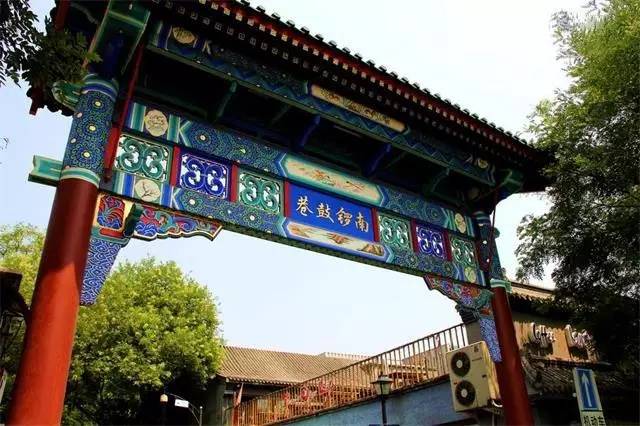
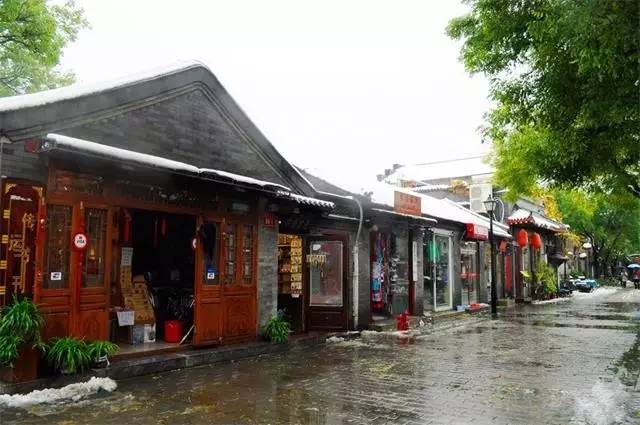
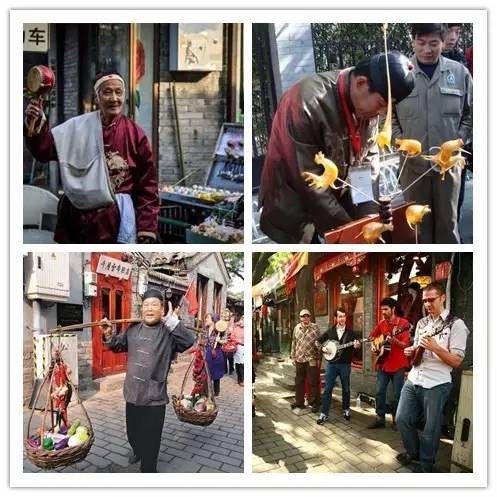
Profile:
South Luogu Lane, located to the north of the Forbidden City and the east of the axis of Beijing, was built at the same time with the Yuandadu (the Capital of the Yuan Dynasty) and so far has a history of about 800 years. It is one of the oldest blocks in Beijing which is listed among 25 old cities protection areas as planned. South Luogu Lane, running from north to south and starting from Gulou East Avenue in the north and ending at Di’anmen East Avenue in the south, is 786 meters long and 8 meters wide. It was built up in 1267 as the same time as the establishment of Yuan Dadu (the Great Capital of Yuan Dynasty). Now South Luogu Lane is the only totally preserved traditional residential district with chessboard type of yard-texture in Hutong of Yuan Dynasty which is the biggest, the highest rank as well as the most abundant in resources.
South Luogu Lane maintains the layout of typical buildings of the Yuan Dynasty, and so, it is called a living fossil of the city buildings of Yuandadu. There are a large number of cultural and historical relics, residences of celebrities, and is, therefore, one of the areas for protecting the old city's images and looks of Beijing City and the buffer area for the Conservation of the old Imperial City. At present, there are 28 units of protection of cultural relics at the national, municipal and district levels, including Keyuan Garden, residence of Wan Rong (the queen of the last Emperor Puyi), residence of Sengge Rinchen, residences of Rong Lu, Hong Chengchou, Kui Jun, etc. Each lane, yard and even a brick or tile are stamped with the signs of history.
Strolling leisurely along every lane of South Luogu Lane or gently opening old gates, you can still feel the traces of old Beijingers' life. The difference is that the people's life has changed and been added with more tints of the times. Private cars are parking along the quiet and long lanes. Neon lamp boxes show their shining signs of "Internet surfing". Pedicabs carrying domestic and foreign tourists pass ringing through the lanes. People with different complexions from different countries walk leisurely into pubs and coffee houses in the lanes, which have a heavy accumulation of traditional culture to taste refined hutong culture. All these have contributed to the building of a bar street with the unique Beijing Hutong Culture, and thus shown a beautiful scenery in Lane with the integration of the oriental and occidental cultures.
2. Shicha Lake (The Three Rear Lakes)
Ticket Fare: Free
Open time: All day
Travel Route: Take the Subway Line 8 (in the direction of Guloudajie Station) from Olympic Green Station around National Conference Center to Shichahai Station (A1 or A2 exit).
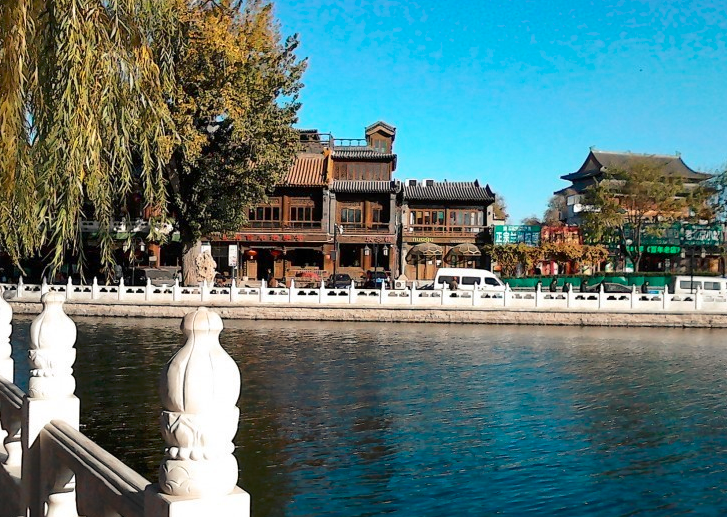
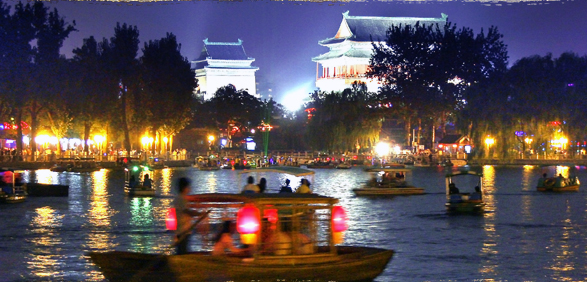
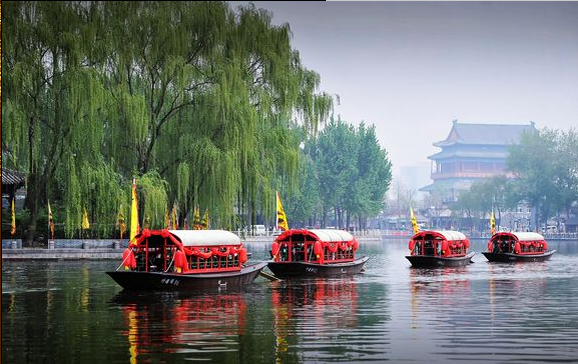
Profile:
Located in the southwest of the Drum Tower in beautiful surroundings, Shicha Lake has a history of about 700 years in the Yuan Dynasty (1279-1368). It assumed its present name in the Ming Dynasty (1368-1644). Strolling along its shoreline, the visitor can appreciate the lake’s glimmering blue water, its graceful weeping willows, its twisting railings and the flower-and-tree-covered central island. Pleasure boats are available for rowing and the banks are amply provided with shady places to rest. A swimming area in the lake is open every summer. Shichahai Scenic Zone, beginning from the Second Ring Road in the north to Ping’an Avenue in the south and from Di’anmenwai Street in the east to Xingjiekou Street in the west, is a paradise for tourists. It encompasses 146.7 hectares(362.5 acres). The Zone is the only area in the city center where vast open waters, comprised by Xihai (West Lake), Houhaai(back or Rear Lake) and Qianhai (Front Lake ) lakes, exist. More than 40 units for protection of historical relics are located there. They include the former residence of honorary president of People’s Republic of China Soong ChingLing(1893_1981); GuoMoruo(1892_1978) Museum, which is devoted to the famous writer, poet and historian; and Guanghua Temple.
3. Bird’s Nest
Ticket Fare: 50 Yuan per person
Open Time:
From March to October: 9:00-18:00
From November to February of next year: 9:00-17:30
Travel Route:
Option1: Take the subway line 8 (in the direction of Guloudajie Station) from Olympic Green Station around National Conference Center to Olympic Sports Center Station, and then walk about 1 kilometer to Bird’s Nest;
Option2: Walk1.2 kilometers to Bird’s Nest (15 minutes or so);
Option3: Taking a taxi for about 5 minutes (spending about 13 Yuan).
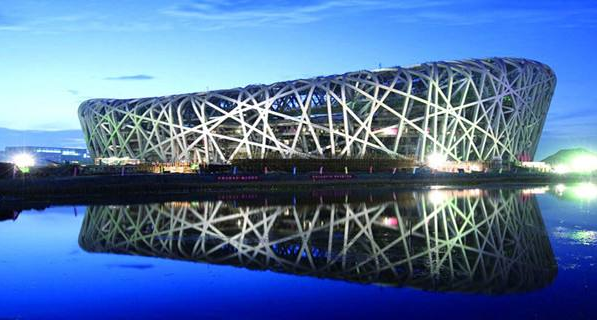
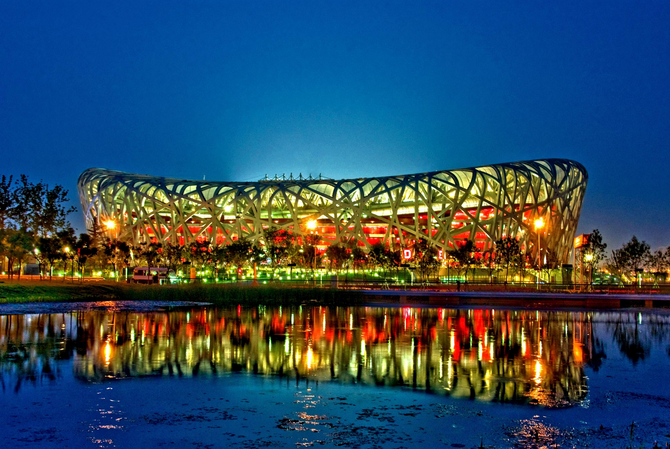
Profile:
The National Stadium is situated in the Beijing Olympic Green. During the Beijing 2008 Olympic Games, the opening ceremony, closing ceremony, track and field meets, and men's football final will be held here. It is the world's largest steel structure and the most complex stadium ever constructed. Its design had to be inspiring and be able to withstand an earthquake. So 'light weight' was combined with strength in 110 000 tons of a new grade of steel, the purest ever developed in China, including 36km of steel struts. It has been a landmark and a longstanding symbol of the Olympics. It is "one of the key engineering marvels in the world today." The Bird's Nest was the main venue of the 2008 Beijing Olympic Games and it has a seating capacity of over 91,000. With a simple and classical space effects, the National Stadium is beautifully designed; and all the structural parts support with each other, forming a network framework. It looks like a bird's nest woven with branches. After the Beijing 2008 Olympic Games, the stadium will become a sports and entertainment facility for the residents of Beijing. And it will become another important tourist attraction of Beijing. By the 2001 Pritzker Prize winner Herzog, and the Chinese architect Li Xinggang de Meuron collaborated giant stadium design, forms as life" nest", it is more like a cradle, is entrusted with the mankind's hope for the future. The designers of the National Stadium did not do any extra processing, just give the structure is exposed outside, so the natural formation of the appearance of a building.
4. Beijing National Aquatics Center
Ticket Fare:30 Yuan per person
Open Time:
From May to October:09:00-20:00
From November to April:09:00-18:00
Travel Route:
Option1: Thirteen minutes (around 1000 meters) walk from the National Convention Center.
Option2: Eight minutes taxi ride from the National Convention Center.
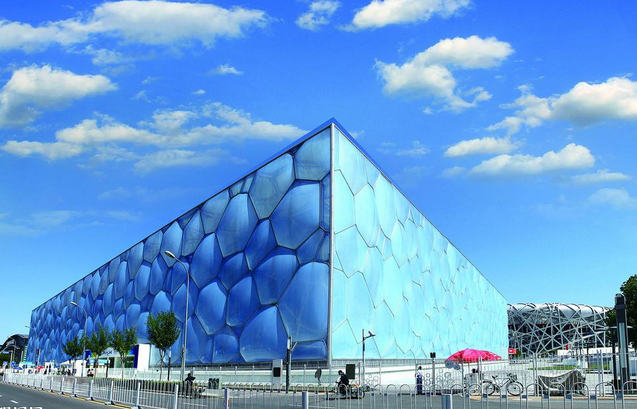
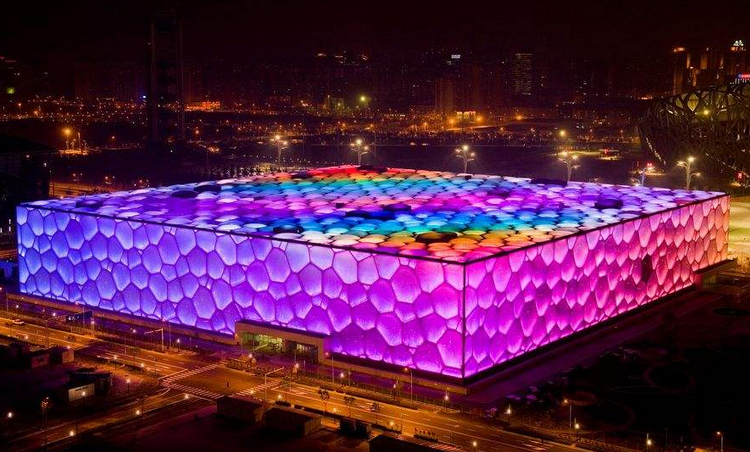
Profile:
The Beijing National Aquatics Center, also officially known as the National Aquatics Center, and colloquially known as the Water Cube, is an aquatics center that was built alongside Beijing National Stadium in the Olympic Green for the swimming competitions of the 2008 Summer Olympics. Despite its nickname, the building is not an actual cube, but a cuboid (a rectangular box). Ground was broken on December 24, 2003, and the Center was completed and handed over for use on January 28, 2008. Swimmers at the Water Cube broke 25 world records during the 2008 Olympics.
After the 2008 Olympics, the building underwent a 200 million Yuan revamp to turn half of its interior into a water park. The building officially reopened on August 8, 2010. It will host the curling at the 2022 Winter Olympics.
In July 2003, the Water Cube design was chosen from 10 proposals in an international architectural competition for the aquatic center project. The Water Cube was specially designed and built by a consortium made up of PTW Architects (an Australian architecture firm), Arup international engineering group, CSCEC (China State Construction Engineering Corporation), and CCDI (China Construction Design International) of Shanghai. The Water Cube's design was initiated by a team effort: the Chinese partners felt a square was more symbolic to Chinese culture and its relationship to the Bird's Nest stadium, while the Sydney-based partners came up with the idea of covering the 'cube' with bubbles, symbolizing water. Contextually the cube symbolizes earth whilst the circle (represented by the stadium) represents heaven. Hence symbolically the water cube references Chinese symbolic architecture.
Comprising a steel space frame, it is the largest ETFE clad structure in the world with over 100,000 m2 of ETFE pillows that are only 0.2 mm (1/125 of an inch) in total thickness. The ETFE cladding, supplied and installed by the firm Vector Foiltec, allows more light and heat penetration than traditional glass, resulting in a 30% decrease in energy costs.
The outer wall is based on the Weaire–Phelan structure, a structure devised from the natural pattern of bubbles in soap lather. In the true Weaire-Phelan structure the edge of each cell is curved in order to maintain 109.5 degree angles at each vertex (satisfying Plateau's rules), but of course as a structural support system each beam was required to be straight so as to better resist axial compression. The complex Weaire–Phelan pattern was developed by slicing through bubbles in soap foam, resulting in more irregular, organic patterns than foam bubble structures proposed earlier by the scientist Kelvin. Using the Weaire–Phelan geometry, the Water Cube's exterior cladding is made of 4,000 ETFE bubbles, some as large as 9.14 meters (30.0 ft) across, with seven different sizes for the roof and 15 for the walls.
The structure had a capacity of 17,000 during the games, later was reduced to 7,000. It also has a total land surface of 65,000 square meters and will cover a total of 32,000 square meters (7.9 acres). Although called the Water Cube, the aquatic center is really a rectangular box (cuboid),178 meters (584 ft) square and 31 meters (102 ft) high. The building's popularity has spawned many copycat structures throughout China. For example, there is one-to-one copy of the facade near the ferry terminal in Macau – the Casino Oceanus by Paul Steelman.
After the Olympics, the Water Cube was opened to the public on select days of the week beginning in June 2009, and was also used as the site for a production of Swan Lake amongst other shows. On October 19, 2009, the Water Cube was closed to the public to begin a massive renovation of a portion of the complex into a water park. The building reopened on August 8, 2010, marking the second anniversary of the beginning of the 2008 Summer Olympics. The redesigned facility contains numerous water rides and slides, a wave pool, and spa areas. The renovations were performed in order to bring renewed interest to the Olympic Green area as part of the games' legacy.
5. Olympic Green
Ticket Fare:Free
Open Time:
From 15 March to 15 November:06:00-20:00
From 16 November to 14 March:07:00-19:00
Travel Route:
Option1: Board Subway Line 8 at Olympic Green Station(320 meters away from National Convention Center), get off at the Olympic Green South Gate Station, and exit via the A Gate.
Option2: Ten minutes taxi ride (about 3.4 Km) from the National Convention Center.
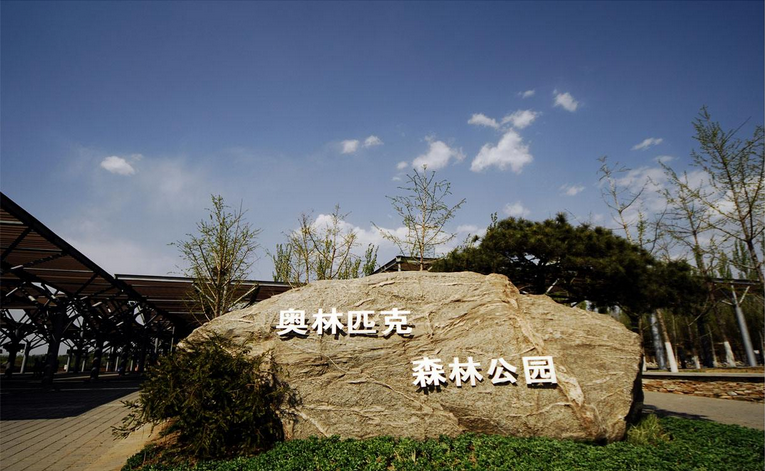
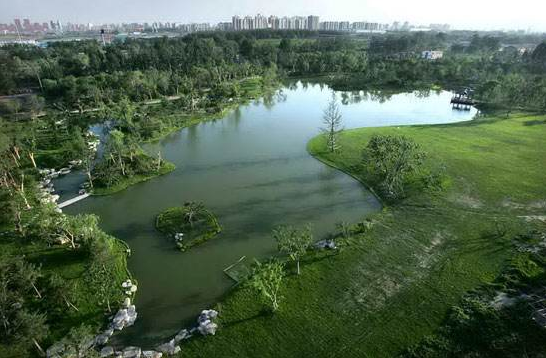
Profile:
The Olympic Green is an Olympic Park in Chaoyang District, Beijing, China constructed for the 2008 Summer Olympics. Since then, the streets around the park have been used for an exhibition street race of the FIA GT1 World Championship in 2011, after a race at Goldenport Park Circuit in the vicinity.
The Olympic Green is centerpiece for the 29th Olympic Games, held in China for the very first time. Located in the northern tip of the city, it covers a total area of 1,215 hectares (3000 acres), of which 760 (1878 acres) are wooded areas and greenery.
A forest park, a central area including 10 competition venues, the Olympic Village, the Main Press Center (MPC), and the International Broadcasting Center (IBC) are a few of the important buildings and regions for the Olympics that can be found at the Olympic Green. The most spectacular of all is the newly built National Stadium, where the opening and closing ceremonies of the Olympic Games were held.
A 60-meter-wide road penetrates the public region from south to north. In the center, an 11-meter-wide road is paved in imitation of the axis of the Forbidden City, which embodies the passing of the Chinese traditional culture. The largest venue at the games in terms of seating capacity was the Beijing National Stadium, also known as the "Bird's Nest", which can held some 91,000 spectators for the opening and closing ceremonies. The Olympic Green was a smashing success, flawlessly hosting the competitions of some 15 Olympic sports as well as serving millions of foreign visitors, tourists, dignitaries, and athletes.
Near the Olympic Cauldron, on the northwest side of the Bird's Nest Stadium is the Linglong Pogoda. The Ling Long Pagoda or Linglong Tower (Multifunctional Studio Tower) houses a part of the International Broadcast Center (IBC). "Ling Long" means delicate, and is referred to as the Delicate Tower in Chinese. The permanent structure is a three-sided tower. The tower contains 6 occupiable pods with open space in between. One of the pods displays the Olympic rings. It is 128m tall, with 7 occupiable floors, each an equilateral triangle. The floors are subdivided into two levels. The glass-walled pods are held up by three supporting ribs at the three corners.
It opened to the public for the first time during the National Holiday in October of 2008. Post-Olympics the Olympic Green has become a center of cultural, recreational, and sporting activities in Beijing. Thousands of people, both Chinese and foreigners, have taken the chance to visit the grand site and flocked to see the sports venues as well as watch a number of special exhibitions and performances. It is expected that the site will continue to attract many visitors and will also serve as an excellent place for China to host more intra-country sporting events in the future.